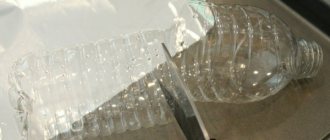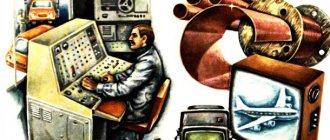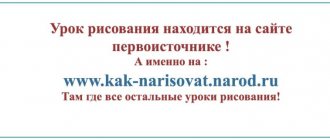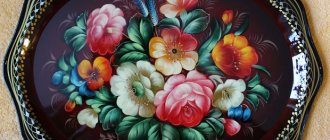Summary of a lesson on experimental activities in the senior group “These mysterious stones!”
Author: Chistova Olga Gennadievna
Target:
Introduce children to the variety of stones, their properties and features.
Tasks:
Educational:
Learn to classify stones according to various characteristics (color, shape, size, weight, temperature, buoyancy). Formation of children's cognitive interest.
Educational:
Develop visual and muscle memory; encourage independent formulation of conclusions. Develop creative activity.
Educational:
cultivate interest in inanimate objects and accuracy in work.
Equipment
: stones, glasses of water, scales, cotton wool, pencils (colored and simple), demonstration diagrams, rule diagrams, a master’s cap, one beautiful pebble, napkins, trays for each child, notepads for each child.
Preliminary work
: formation of knowledge about the rules of behavior in the laboratory; define the concept of “collection”, teach children to classify according to different criteria.
Vocabulary work
: collection.
Progress of the lesson.
1. Organizational moment.
Hello guys! I'm very glad to see you! Come in, sit down on these soft pillows. Let's share warmth and kindness with each other, give each other our smiles.
Guys, do you think that an outsider, entering this group, will be able to guess about our hobbies?
Do you have any hobbies? (children’s answers)
What different hobbies you have! Every person has a favorite thing that he likes to do in his free time. I also have such a hobby - this is... collecting. Do you know what this is? (Collecting is the collection of any objects). You can guess what I collect if you guess the riddle.
It burns with fire in my mother’s earrings. It lies useless in the dust on the road. It changes shape, it changes color, And in construction it is good for a thousand years. It can be small - lie in the palm of your hand. It's heavy and big - you can't lift it alone.
Who, children, guessed my riddle? Who recognized this object by signs? (stone)
Look what a beautiful stone I have in my collection. (showing a pebble)
— Guys, what do you know about stones?
“You don’t know very much about them.” Here I am, I’ve collected a whole collection, but I can’t tell you anything about it, I don’t know the secrets of the stones.
Do you want to know all the secrets of the stones? To study them more fully, I suggest you go to the laboratory.
Educator:
What is a laboratory?
Children:
This is a special room where research is carried out, experiments are carried out.
Educator:
To work in a laboratory you need to know some rules of behavior. Shall we remember them? (the teacher shows the diagrams and rules, the children say the symbols). Fine. When scientists conduct experiments, they record their observations in special journals. So that you can sketch your observations, I want to give you these notebooks.
They go to the laboratory
Educator:
Look, guys, at this table it will be convenient for us to study stones. And on that table there are assistant instruments. Take a seat wherever it is convenient for you. Today our faithful assistants will be actively working. Why do we need eyes? (to look) Fingers? (to touch, feel)
I suggest looking at the stones first. What groups do you think they can be divided into? (children's options) So, what kind of stones are there? (large, small, different colors, shapes). You have discovered one secret of the stones. Use a notebook and pencils to sketch your observations. How can you sketch that stones come in big and small, different colors, different shapes?
They sketch, the teacher puts his diagram on the easel.
Educator:
and I did it like this.
—
Now you will need your sensitive fingers. Close your eyes, stroke your pebbles. Do all stones feel the same?
- try to choose the most uneven, rough stone.
- And now the smoothest pebble? Think about where you can most often find such a stone? (By the sea)
- Why do you think it doesn’t have sharp corners? (Water moves the stones, hits them against each other, they also rub against the sand, the sharp corners gradually wear off and disappear. The pebble becomes round.)
Guys, what secret did you discover? (stones can be smooth or rough). Don't forget about your notebooks, you can sketch them.
They sketch, the teacher puts his diagram on the easel.
—
You know, it turns out our skin can detect temperature! Don't believe me? Place your palms on your cheeks. How do your cheeks feel? (warmly) Now put your palms on the table and quickly on your cheeks. Do you feel the difference? (palms became cool)
Our skin can quickly detect temperature.
“Now we will have a very difficult experience.” You will need attention and concentration.
-Out of all the stones, you need to choose the warmest and the coldest.
-How can I do that? (Press in palms, bring to cheek)
What have you found out, my little scientists?
Conclusion:
stones have different temperatures. Mark this secret in your journals.
They sketch, the teacher puts his diagram on the easel.
4) Guys, what do you think is heavier: stone or cotton wool? (stone) What if you take a lot of cotton wool and just one stone? Let's check? What do we need to check this? (cotton wool, stone, scales) Let's do this experiment with a friend nearby. Go to the laboratory, take the necessary items. What should we put on one side of the scale? (cotton wool) What should we put on the other bowl? (stone) Which is heavier? What else can we do? (add cotton wool) Which is heavier?
Look, we've already run out of cotton wool. What did you get? (the stone is still heavier) How can you sketch this in your diaries?
They sketch, the teacher puts his diagram on the easel.
Before we continue, let's remember what rule we must follow now? (putting everything back in its place)
5) Guys, do you think there is air in the stones?
How can we check this? Go to the laboratory and take what you need for this experiment.
Children carefully place the stone in the water. They are watching. (The stone has sunk, air bubbles rise from it to the surface, the color has changed and become brighter.)
They sketch, the teacher puts his diagram on the easel.
Reflection.
Guys, please look at the board. Page by page we compiled a whole story about the stones. Story in diagrams. Who wants to become a real scientist, put on a master's cap and use his notes to tell the secrets of the stones that we learned today.
Well done!
Now I know what I can tell about my collection. You can take your diaries home with you and continue to write down some interesting observations of yours, and then tell us in the group. comments powered by HyperComments






